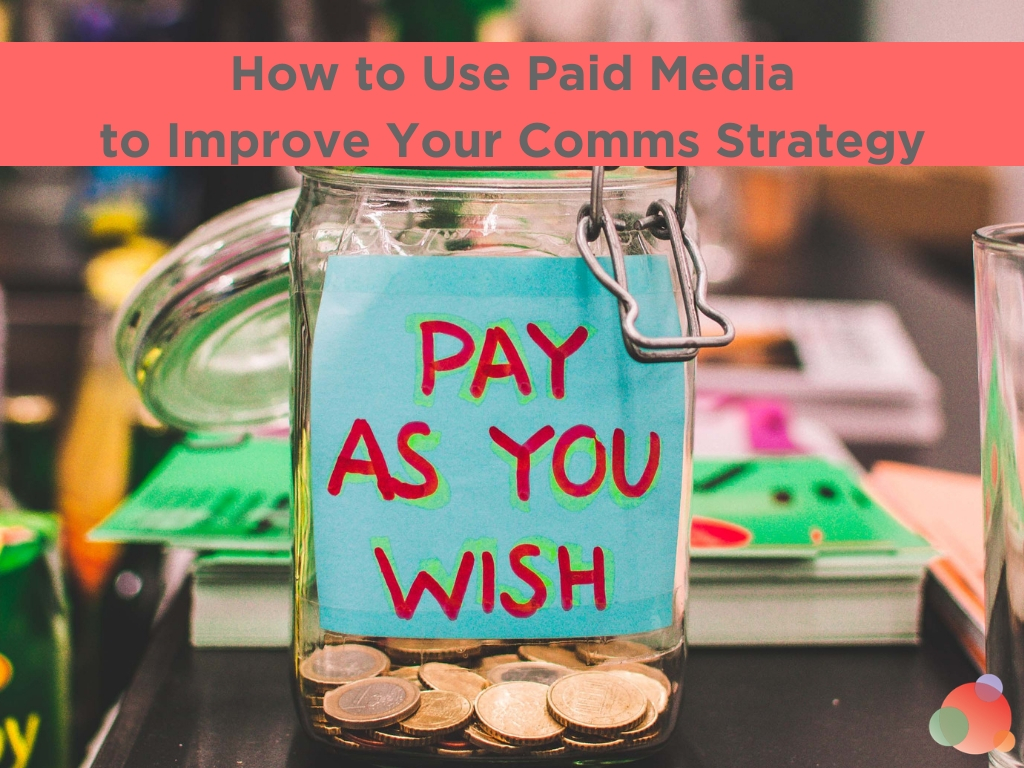 Paid media is exactly what it sounds like—you pay to reach new audiences.
Paid media is exactly what it sounds like—you pay to reach new audiences.
We’ve talked here before about the “P” of PESO.
We’ve covered how paid media fits into a larger communications strategy, and what it looks like in practice.
Today, I’d like to spend a little time digging further into paid media, this time with a specific focus on the platforms you can use to promote and amplify your content.
No need to be scared.
It’s not like it’s really easy to spend tons of time and money on campaigns that ultimately flop…
Bahahahahahaaah!
Not.
It’s crazy easy to spend lots of time and money on something that doesn’t work.
But learn from me. Please learn from me.
I am here to save you!
Paid Media Improves Your Comms Strategy
We talked about the nuts and bolts of paid media when we were going through the PESO model, go ahead and go read that.
We’ll wait.
Good? OK!
Today, we’re going to dig more into the different ways you can use paid media to improve your communications strategy.
You know, like how to figure out which platforms to advertise on, and how to figure out if your campaigns are working or not and why.
So, which social platforms can you advertise on?
It might be better to ask which ones you CAN’T advertise on. Seriously, if you can think of any, let me know.
LinkedIn, Twitter, Facebook, YouTube, Amazon, Pinterest, Snapchat, Instagram… they all have advertising platforms.
(And this isn’t even to SPEAK of the search engines such as Google and Bing. Even podcasting is starting to have self-serve advertising platforms.)
Truly, there is no end of platforms on which you can spend your advertising budget.
But as we’ve talked about—social media is kind of magical because it’s… social.
People talk and connect there, and it’s where your audience IS, so it makes sense for you to be there.
The “Easy” Process
What does this process typically look like?
You decide what your goals are—content, conversion, or closing, make sure your pixel, or other tracking codes are well placed, create a great landing page for someone to take that next step on…
Easy right?
No. Not easy.
There are a mix of variables you have to get right to see the most success—and it can be as much art and intuition as science and data.
(But if in doubt, use data!)
You can think you know everything going in, but if you have the wrong audience, or you’re talking to the right audience about the wrong thing… eh.
Try won’t get the outcome you’re hoping for.
And you know what?
That’s going to happen.
It can be challenging and disappointing, but testing is the best way to learn.
And, if you get really clear about what success and failure look like for your campaigns, you’ll learn fast, and it won’t be too expensive.
Testing and Tweaking for Improvement
Here’s what I mean.
If you’re running a content campaign to get more eyes on that really exceptional blog post you wrote, you want to decide in advance what conversion rate from the social platform to your website you’ll be happy with, and how long you’re willing to wait to find that out.
Maybe you’ll decide that you want to test an ad for five days, to see if you can get 20 percent or more of people who view the ad to click through to your site.
If that happens, great!
You will know the cost of those website visitors and can continue the ad.
If you didn’t reach your goal (and 20 percent is just an arbitrary number based on our own results—you’ll have to test to find your correct number), I would start with changing the ad, one thing at a time.
Try changing images first and let that run for a week.
If your conversion percentage doesn’t increase, change the headline and let that run for a week.
And so on.
One thing at a time so you can test and know what’s working and what’s not working.
This will give you time to collect enough data to make an informed decision.
The Spin Sucks Stats
It’s always worthwhile to invest in learning, and small, short campaigns are great learning.
Because we use Facebook ads for the Spin Sucks agency owner program, I am happy to share results with you.
In the beginning, we were crushing it!
Our click-through rate was 1.26% (the industry standard for this type of advertising is 1%) and our cost per booked call—someone booking a consultation with us—was $72.22 (the industry standard is $150).
I mean, crushing it.
BUT…
We weren’t getting enough calls booked—we were getting about four calls from that, and I wanted closer to 10 to 15.
So I mucked with the ads.
And I crashed and burned them.
We immediately dropped to a .53% click-through rate and up to $118.35 per booked call.
We even got as high as $425.60 per booked call before I scrapped it all and started over again.
It was not good.
Today, our click-through rate is closer to two percent and our cost per booked call is $48.16.
But it took about nine weeks to get us back to where we were in the beginning.
Had I just left things alone and simply increased our daily spend, we wouldn’t have had that painful—and semi-expensive—nine weeks.
The point is this: don’t get greedy.
And give yourself at least two weeks to collect data before making any decisions.
Sometime soon (maybe January), we can talk about standards and rules of thumbs and goals.
But for now, collect your data and test, but don’t muck too much with things.
P.S. If you missed this week’s Spin Sucks podcast episode on the same topic, you can listen to it below…
Photo by Aneta Pawlik on Unsplash